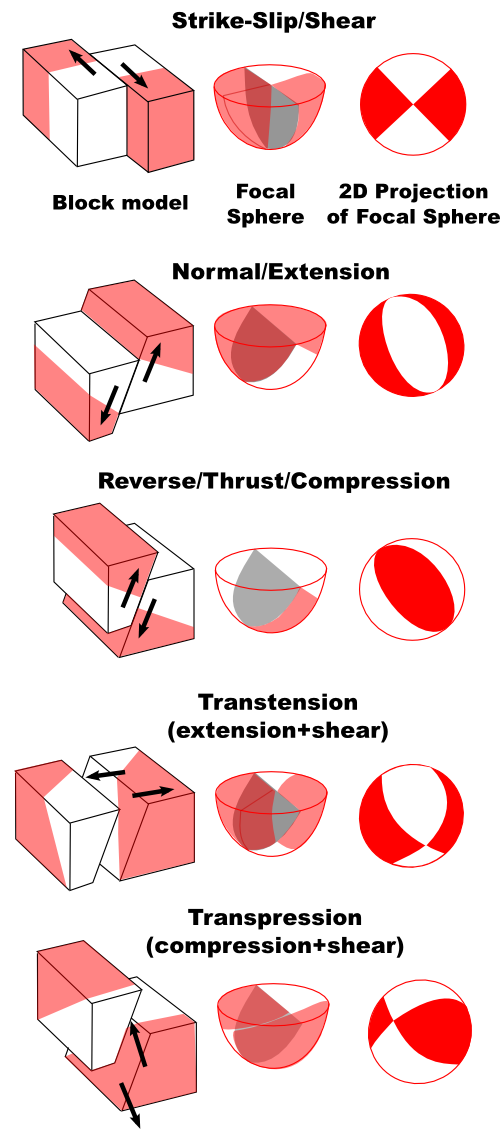 On the 5th day of Christmas my true love sent to me: 5 focal mechanisms…
On the 5th day of Christmas my true love sent to me: 5 focal mechanisms…
The global network of sesimometers pick up on any largish earthquake and allow people like the USGS to triangulate their location and work out their magnitude.

Source: IRIS
Data from these stations can also be used to derive useful information about the nature of the fault that ruptured, usually provided in the form of beach-ball like focal mechanisms, which are based on the first motions of the seismic waves generated by an earthquake, which will be different at different seismic stations depending on their azimuth from the rupture point. For example, in the first block model of a strike slip fault in the figure below, the fault trends to the northwest and has ruptured with a dextral sense (from the perspective of someone standing on one side of the fault, the other side has moved to the right). Due to this rupture, rock in the northwest and southeast quadrant is initially compressed, before snapping back elastically, meaning that seismic waves transmitted in these directions have a squashy, compressional first motion. In contrast, rock in the northeast and southwest quadrants are initially stretched before elastically recovering, meaning that seismic waves transmitted in these directions have stretchy, dilational first motions.
With a good global distribution of seismograph stations, waves in all 4 of the compressional and dilational quadrants will be picked up, allowing the distribution of first motions, and hence the fault configuration, to be reconstructed. The focal mechanisms that are usually given to convey this configuration are a way of plotting the three dimensional fault information in two dimensions (they’re lower hemisphere stereographic projections). The figure below is an attempt to show how a simple block model of the first motions of 5 common types of earthquake look when projected onto a lower hemisphere, and then when the pattern on that focal sphere is projected onto the horizontal to produce a 2D focal mechanism.

Why are focal mechanisms interesting? Because they allowyou to remotely determine the most common kinds of earthquakes occurring in particularly active areas, and hence how these areas are deforming in response to plate motions. This information is often not easily available in any other way: even if you visit an area, identifying active faults, and their sense of motion, can be a real challenge, and many fault ruptures might not even break the surface. Plus, they allow me to write posts like this.



Comments (3)
Links (3)-
-
-
Pingback: Friday(ish) Focal Mechanisms | Highly Allochthonous
Pingback: Friday-ish focal mechanisms | Highly Allochthonous
Pingback: Tectonics of the Haitian earthquake | Highly Allochthonous